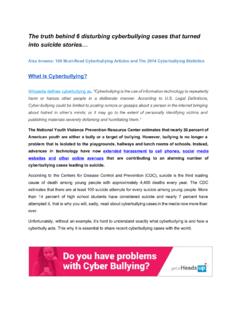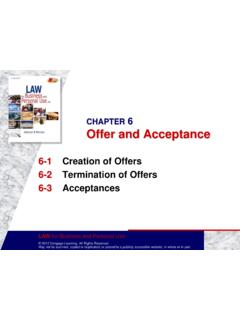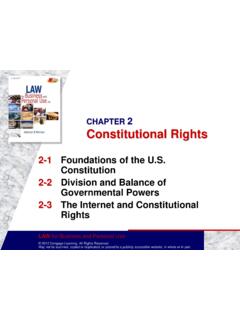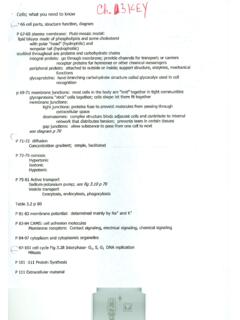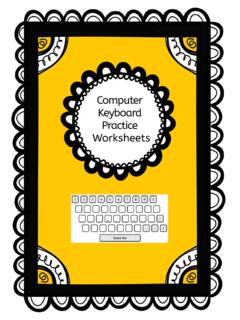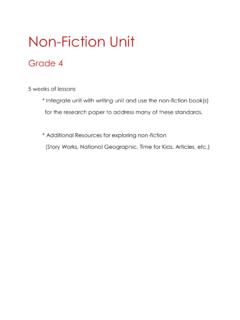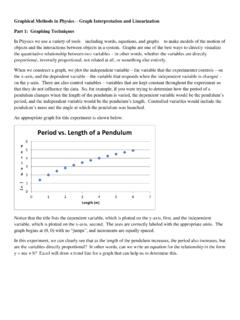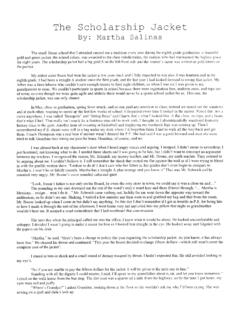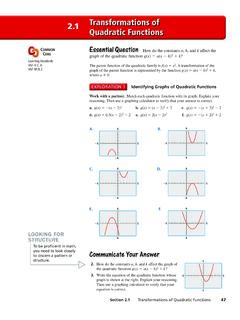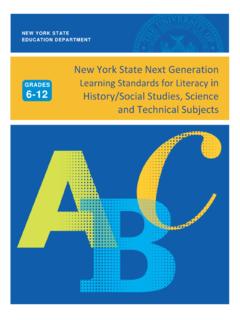Transcription of WASHINGTON TOWNSHIP PUBLIC SCHOOLS FIFTH GRADE …
1 WASHINGTON TOWNSHIP PUBLIC SCHOOLS FIFTH GRADE NUMBER THE STARS TEACHER RESOURCE GUIDE NUMBER THE STARS UNIT READING CALENDAR Week/ Section 1 Lesson 1: Written Conversations; Introducing the genre and setting Lesson 1: Introducing the setting (continued): Holocaust Read aloud Star of Fear, Star of Hope; model thinking aloud during reading using post-it notes; introduce Review ; Complete written response for Star of Fear, Star of Hope Begin work on Number the Stars Section 1 (chapters 1-4) Week/ Section 2 Continued work on Section 1 Continued work on Section 1 Complete work on Section 1; optional OER using a discussion question Lesson: Close Reading Section 1: Complete notes for discussion Lesson: Close Reading Section 1: Use notes to complete the open-ended question Week/ Section 3 Begin Section 2 (chapters 5-8) Continued work on Section 2 Continued work on Section 2 Complete work on Section 2; optional OER using a discussion question Lesson: Close Reading Section 2: Read and complete notes for discussion Week/ Section 4 Lesson: Close Reading Section 2: Use notes to complete the open-ended question Begin Section 3 (chapters 9-13) Continued work on Section 3 Continued work on Section 3 Complete work on Section 3; Choose one discussion question for a written response Week/ Section 5 Begin work on Section 4 (chapters 14-17, Afterword) Continued work on Section 4 Continued work on Section 4 Complete work on Section 4; optional OER using a discussion question Lesson: Close Reading Section 4: Read and complete notes for discussion Week/ Section 6 Lesson: Close Reading Section 4: Use notes to complete the open-ended question Optional Extension Activities Optional Extension Activities Assessment Assessment Overview of the Text Number the Stars is told from the point of view of ten-year-old Annemarie Johansen.
2 The story is set in the city of Copenhagen, Denmark in September 1943, the third year of the Nazi occupation of Denmark. Annemarie and her best friend Ellen, who is Jewish, are stopped by soldiers on their way home from school. The two girls, who go to the same school and live in the same building, are unsettled by their first direct encounter with the Germans. Mrs. Johansen and Mrs. Rosen are concerned and ask the girls to take a new route to school. The encounter makes Annemarie reflect on what her father has taught her about Denmark and also about her older sister Lise's death a few years before the start of the novel. Later in the fall, Annemarie and her younger sister Kirsti discover that Mrs. Hirsch's neighborhood shop has been closed. This event further alarms Mrs. Johansen, though Annemarie does not understand why. During a late night visit from Peter Neilsen, a member of the Resistance and the man Lise was to marry, Annemarie is told more about the war. Her parents and Peter explain that Jewish stores are being closed.
3 The next day, the Rosens must flee. They leave Ellen with the Johansens. During the night, German soldiers come to the apartment demanding that Mr. Johansen disclose the location of his friends. He refuses and they search the apartment. Ellen pretends to be one of the Johansen's daughters, but her dark hair causes the solider to be suspicious. Luckily, Mr. Johansen is able to show them a baby picture of Lise with dark hair, which convinces the soldiers. The next day, Mrs. Johansen takes the three girls to her brother Henrik's home in Gilleleje, Denmark, where Henrik is a fisherman. They spend a peaceful day in the house by the ocean before Henrik announces that their Great-aunt Birte has died. The service is to be held that evening. Annemarie knows that no such aunt exists, and demands the truth. Uncle Henrik explains the importance of not knowing too much when bravery is needed. That night the coffin arrives and they gather around it. Many more people arrive, but all are silent.
4 Soon Peter appears with the Rosens, who are reunited with Ellen. Soldiers, drawn by the post-curfew lights, come to the house. They demand that the coffin be opened, a problem since the coffin is empty. Mrs. Johansen thinks quickly and says that her aunt died of highly contagious typhus. The soldiers leave. Henrik takes the first group of people down to his boat. Mrs. Johansen follows with the Rosens. Annemarie, who now understands that the people are being taken to safety in Sweden, awaits her mother's safe return. When her mother does not appear, she discovers that Mrs. Johansen has broken her ankle. Because of this, Annemarie must take an important package to her uncle before they can leave. On the way to the boat, soldiers with dogs stop her. They search her basket and discover the package. But when they rip it open it contains only a handkerchief, and they let her go. Annemarie makes it to the boat in time, to Henrik's evident relief. That evening, Henrik is safe at home having dinner with Annemarie, Kirsti, and Mrs.
5 Johansen, whose ankle has been taken care of by the local doctor. After dinner, Uncle Henrik takes Annemarie to learn how to milk the cow. They talk about the events of the day. He explains that he hid his passengers in the bottom of the boat, and the handkerchief was essential because it kept the Germans' dogs from smelling the human cargo. Uncle Henrik praises Annemarie for her bravery and reassures her that Ellen is safe and they will meet again someday. The war ends in May, and Annemarie and her family watch from their balcony as people parade in the streets with the Danish flag. Annemarie thinks of the Rosens and realizes that they, along with all the others who were forced to flee, will soon be returning home. Peter Nielsen has died. He was shot in a PUBLIC square for his involvement in the Resistance. Annemarie's parents tell her that Lise was a member of the Resistance, too, and that she did not die in an accident, but was killed by the Germans. Thinking of Lise and of Ellen, Annemarie goes to the trunk of Lise's things in her room and takes out the Star of David pendant that she has been keeping for Ellen.
6 She says she will wear the necklace herself until Ellen returns. (Provided by Sparknotes) Whole Class Lesson #1, Day 1 Setting the Stage Learning about historical fiction and the Holocaust Overview: This lesson teaches students about the basic elements of both historical fiction and the Holocaust. Classroom Resources: Overhead projector/document camera Computer Instructional Plan: The purpose of this lesson is to prepare students to read Number the Stars. Students need to understand the term historical fiction and its components. More importantly, students need to gain an understanding of the who, what, when, where and why of the Holocaust. Instructions and Activities: 1. Begin the lesson with a written conversation : Students write their names on the top of a piece of paper, then respond in writing to the prompt: Would you risk your life to save another person? Give students 2-3 minutes to write a brief response. Students should provide a few sentences for their response.
7 Students pass their paper to a classmate. Students read the response, then respond to what their classmate has written. Give students 2-3 minutes to write their responses. Students pass their papers to a third classmate. This time, they read both written responses on the paper, add their own response to what their classmates have written. Papers go back to the original writers. Students reread their original response, read the two responses provided by their classmates, and then write a brief final reflection. 2. Discuss the term historical fiction with students. Guide the discussion towards the idea that historical fiction, while a fictional story, is written to portray a time period or convey information about an important time period or a historical event. Explain that at this point in history, many people were faced with the decision whether or not to risk their own lives to help others. Orally discuss written students responses to this question. 3. Having browsed the websites above (or any additional ones you see fit), use the sites to introduce students to the Holocaust.
8 Students should gain understanding of who was involved, when it took place, what occurred, where it occurred and why these events took place. Be very careful to screen all sites carefully before presenting them under a document camera. Students should contribute their own schema of the Holocaust throughout the discussion. (Optional: this task can be completed as student research with careful consideration of the sites accessed by the students.) Student Assessment/Reflections: Collect students written conversations to informally assess student responses. Informally assess students comprehension through questioning in group discussion. Provide opportunities to turn and talk with partners while you circulate the room to listen. Whole Class Lesson #1, Day 2 Setting the Stage Learning about historical fiction and the Holocaust Overview: This lesson teaches students about the basic elements of both historical fiction and the Holocaust. Classroom Resources: Overhead projector/document camera Computer Map of Europe Instructional Plan: The purpose of this lesson is to prepare students to read Number the Stars.
9 Students need to understand the term historical fiction and its components. More importantly, students need to gain an understanding of the who, what, when, where and why of the Holocaust. Instructions and Activities: 1. Review information discussed yesterday about historical fiction and the Holocaust. 2. Continue to use previewed sites to introduce students to the Holocaust. Students should gain understanding of who was involved, when it took place, what occurred, where it occurred and why these events took place. Be very careful to screen all sites carefully before presenting them under a document camera. Students should contribute their own schema of the Holocaust throughout the discussion. (Optional: this task can be completed as student research with careful consideration of the sites accessed by the students.) 3. Distribute map of Europe. Students will color this map according to the code on the bottom of the page in order to gain an understanding of the locations of the countries in Europe, which were under German control, which were Allied countries and which countries remained neutral.
10 Student Assessment/Reflections: Informally assess students comprehension through questioning in group discussion as well as map completion. Provide opportunities to turn and talk with partners while you circulate the room to listen. Lesson: Answering Open-Ended Questions ( ) Overview: Students will use the acronym RACE to answer open ended questions. It is expected that students use this model to answer open ended questions for the remainder of the year. Resources: You will find a PowerPoint presentation and a handout about RACE on the e-board as well as a scoring rubric. This will be moved to the new website. 1. Click Teacher Resources. 2. Click elementary english language arts 3. Password: ELA 4. Under ELA Overview, click white tab labeled, Open-ended Questions (NJ ASK format) Grades 3-5 The following acronym may be helpful in constructing a response Review the question Answer all parts of the question Cite specific details and support from the text Extend your response to push your thinking R = Review: Review the question.

